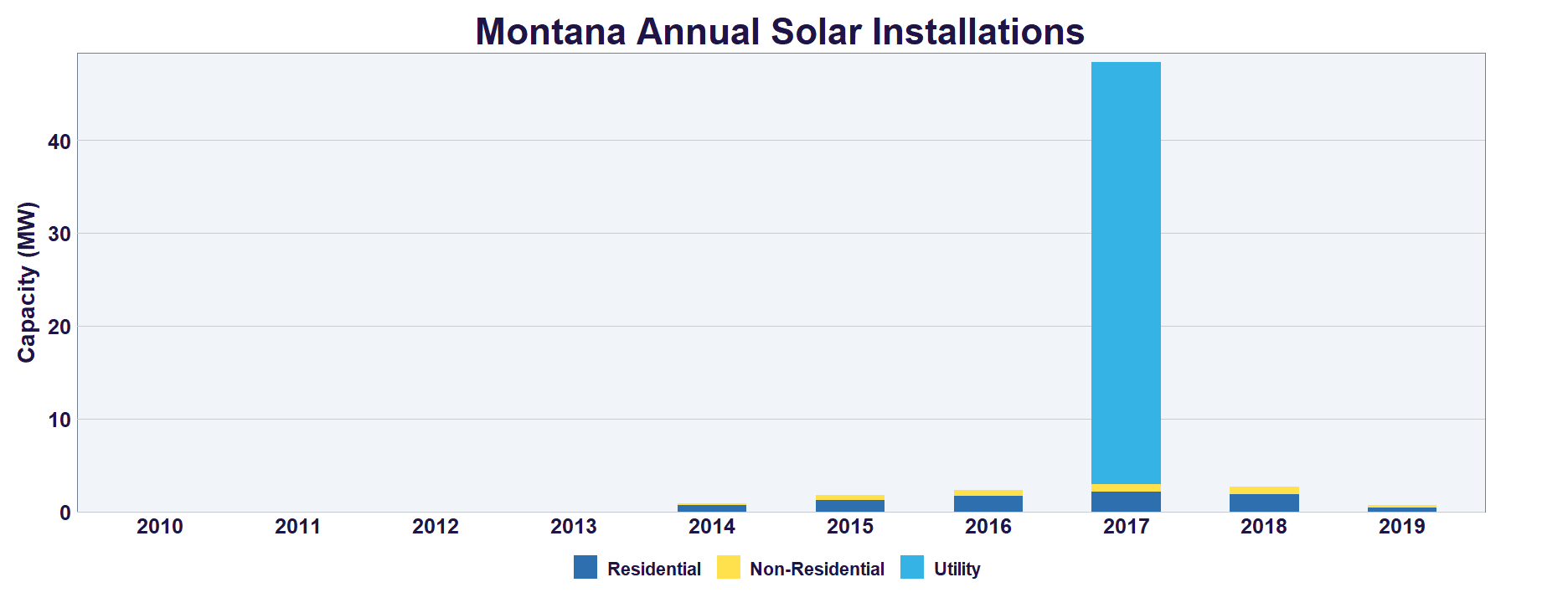Montana judge James A. Manley had previously ruled that the state’s Public Service Commission (PSC) had violated the rights of developer MTSUN by cutting both the rates paid for electricity and contract lengths under the Public Utility Regulatory Policies Act of 1978 (PURPA), for the express purpose of undercutting the viability of solar power. This was in contrast to taking into consideration standard avoided cost and other values as PURPA dictates.
The judge noted:
Here, the Commission improperly attempted to act as a quasi-legislative body by implementing new policy rather than acting as an impartial trier of fact.
Now, the same judge has set the rates and terms (pdf) for solar projects under PURPA. The judge ruled that the commission must compare this 80 MWac project to an 18 MW internal combustion engine (as per the utilitity’s 2015 IRP) to determine avoided cost, and that this value is $28.68/MWh. This value was agreed to by the utility, Northwestern Energy, and the developer prior – before the cut in rates that led to this case. Additionally, roughly $9.95/MWh must be paid as a price for carbon. Lastly, the judge set contract length at 25 years.
The two values total $38.33/MWh. The plant, if built today, would increase the state’s total capacity by close to 200%.
Local news, the Montana Free Press (and source of the above link to case ruling), noted the public communication history of the PSC that the judge used as part of the ruling. For instance, Montana Public Service Commissioner Bob Lake was caught on a hot mic acknowledging that cuts made to rates and contracts offered to small renewable energy contracts will likely stifle future development. In newspaper opinion pieces written by another commissioner, climate science was called into question, solar developers were said to be “throwing ratepayers under the bus to boost their own profits,” and anyone who criticized the PSC’s rulings were characterized as “environmental activists.”
One might argue that a decent amount of damage to the solar industry – and specifically the individuals involved – has already been done though. The original rates were $66/MWh. Additionally, the developers have spent multiple years defending themselves against – per the judge – politically biased individuals who are supposed to be serving on a commission to protect consumers and the public against a monopoly granted by the state. And of course, while this case has been moving through the courts since 2016 when pv magazine USA first reported on it, hundreds of megawatts in at least 77 projects of which were in development per Utility Dive, were put on hold. It is likely that hundreds more were never even considered as developers abandoned the market.
Per SEIA, Montana was 47th out of 50 states in terms of total solar installed at 57 MWdc. Other than in 2017, the state has installed essentially zero utility scale solar power.

This content is protected by copyright and may not be reused. If you want to cooperate with us and would like to reuse some of our content, please contact: editors@pv-magazine.com.








By submitting this form you agree to pv magazine using your data for the purposes of publishing your comment.
Your personal data will only be disclosed or otherwise transmitted to third parties for the purposes of spam filtering or if this is necessary for technical maintenance of the website. Any other transfer to third parties will not take place unless this is justified on the basis of applicable data protection regulations or if pv magazine is legally obliged to do so.
You may revoke this consent at any time with effect for the future, in which case your personal data will be deleted immediately. Otherwise, your data will be deleted if pv magazine has processed your request or the purpose of data storage is fulfilled.
Further information on data privacy can be found in our Data Protection Policy.